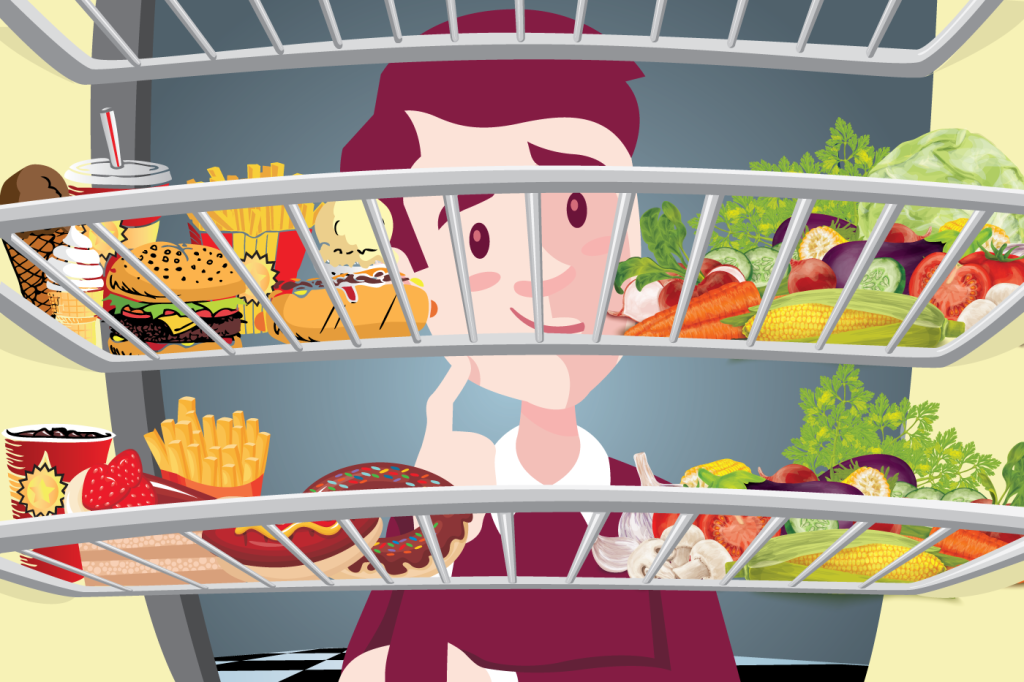How to eat a healthier diet in 2016

When members of the Northeastern community voted on which New Year’s resolutions they’re taking up, “eating a healthier diet” was high on the list of vote-getters. For advice to help you achieve this goal, we turned to Christine Clark, a dietitian and program consultant and instructor in the Master of Science in Applied Nutrition program at Northeastern. She also works for Northeastern Dining and counsels students at University Health and Counseling Services.
Clark says we often set our New Year’s goals just a bit too high and sometimes want to give up when we don’t meet them. Staying on track is not always easy, she explains, but it is important if we want the goals to stick. Here, Clark offers some strategies to help you maintain positive changes toward a healthier you this year.
Start your day with breakfast
It is important to start your day by eating something, as it is a great way to kick-start your metabolism. It may also help you avoid overeating later in the day. Some people feel like they don’t have time for breakfast. If that is the case, take something on the go. Try a peanut butter sandwich with a banana, trail mix including nuts, dried fruit, or cereal. Or, add some fruit or dry whole grain cereal to a container of yogurt.
Carry healthy snacks with you
Carrying snacks with you can help when you have a stretch of time before your next meal. Eating snacks can also help you avoid feeling starved at your next meal, so you don’t overeat and take in extra calories. Pack foods that can stay in your bag for a while. Try trail mix (including nuts, fruits, pretzels, or cereal), granola bars, popcorn, pretzels, dried fruit, or dry whole grain cereal.
Eat without distractions
Try not to eat in front of the computer or television. This is not easy when you need to finish a project and don’t want to delay. But consider this—when we eat in front of the screen it is likely to result in more mindless eating, which most often turns into increased portions with the end result of taking in extra calories. Whenever possible, sit at the table to eat your meals. It should be a social thing.
Work on creating new healthy eating habits
Try to develop healthy habits that result in lifestyle changes. When you are trying to improve your eating habits one thing that might create lasting changes is not fighting old habits, but working on building new ones. Creating new habits like planning meals and snacks for the day, eating at the table, or taking a walk after lunch (or dinner) may also push away those old habits.
Allow yourself room for error
Give yourself a break. We all have a moment when we overindulge. The key to successful healthy changes is allowing yourself these moments and not letting them sabotage your hard work. The best thing you can do during these times is to get back on track eating healthy as soon as you can.

Christine Clark is a dietitian and program consultant and instructor in the Master of Science in Applied Nutrition program at Northeastern. She also works for Northeastern Dining and counsels students at University Health and Counseling Services. Photo by Adam Glanzman/Northeastern University





